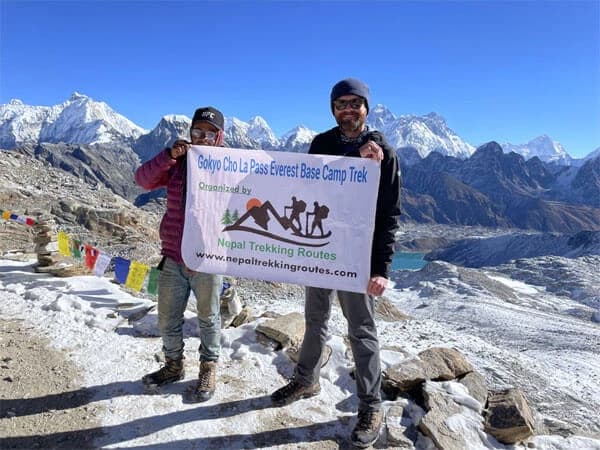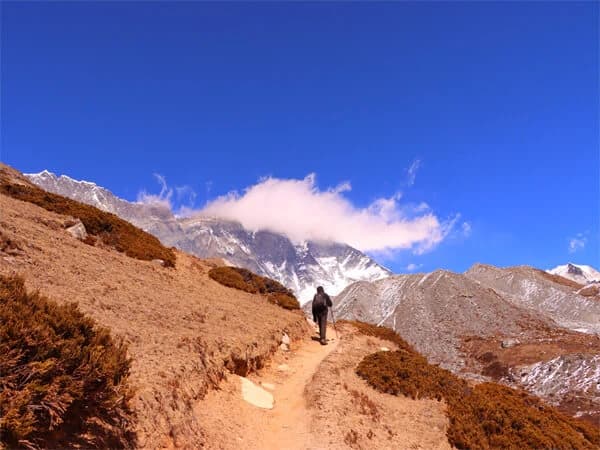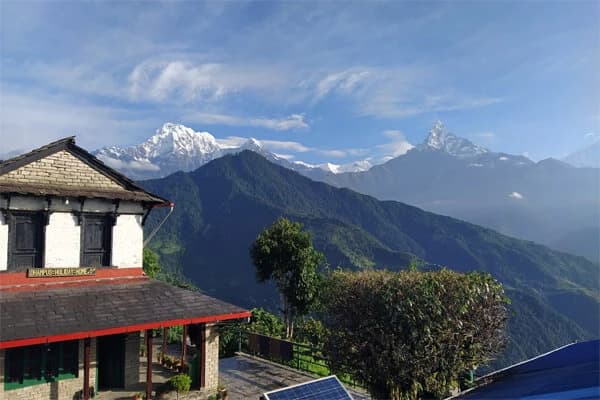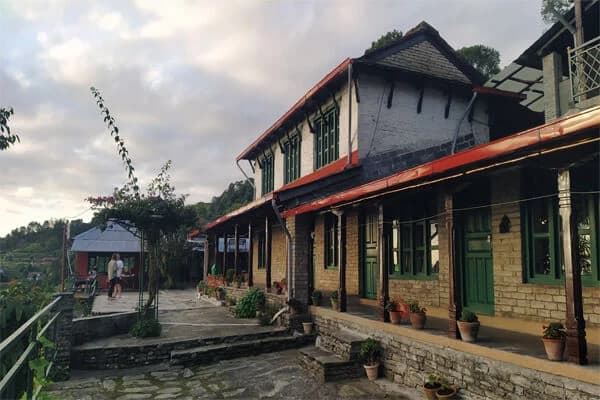Everest Three High Passes Trek difficulty is considered strenuous to very challenging. This trek is a high-level adventure that traverses three significant high passes, Kongma La, Cho La, and Renjo La in the Everest Region. It is not your typicaltrek to Everest Base Camp. Each pass is physically taxing because of its rocky routes, steep climbs, and icy sections. Trekkers must also deal with high altitude, which, if left unchecked, can result in fatigue, headaches, or altitude sickness. Glaciers, snow-capped peaks, and isolated Sherpa villages are among the stunning scenery that the trail passes through, but these natural treasures need more work and planning.
Good fitness, prior trekking experience, and appropriate acclimatization are prerequisites for trekking in Nepal. While elders and lone trekkers should exercise particular caution and ideally travel with a guide or group, beginners may find it quite challenging. Walking can take up to six to eight hours a day, and the weather might change suddenly, which makes things even more difficult.
This blog will provide a simple overview of the Everest Three High Passes Trek's difficulty. It includes information on altitude, terrain, fitness requirements, and advice to help you safely get ready for this once-in-a-lifetime experience.
What are the Difficulty Level of Everest Three Pass Trek?
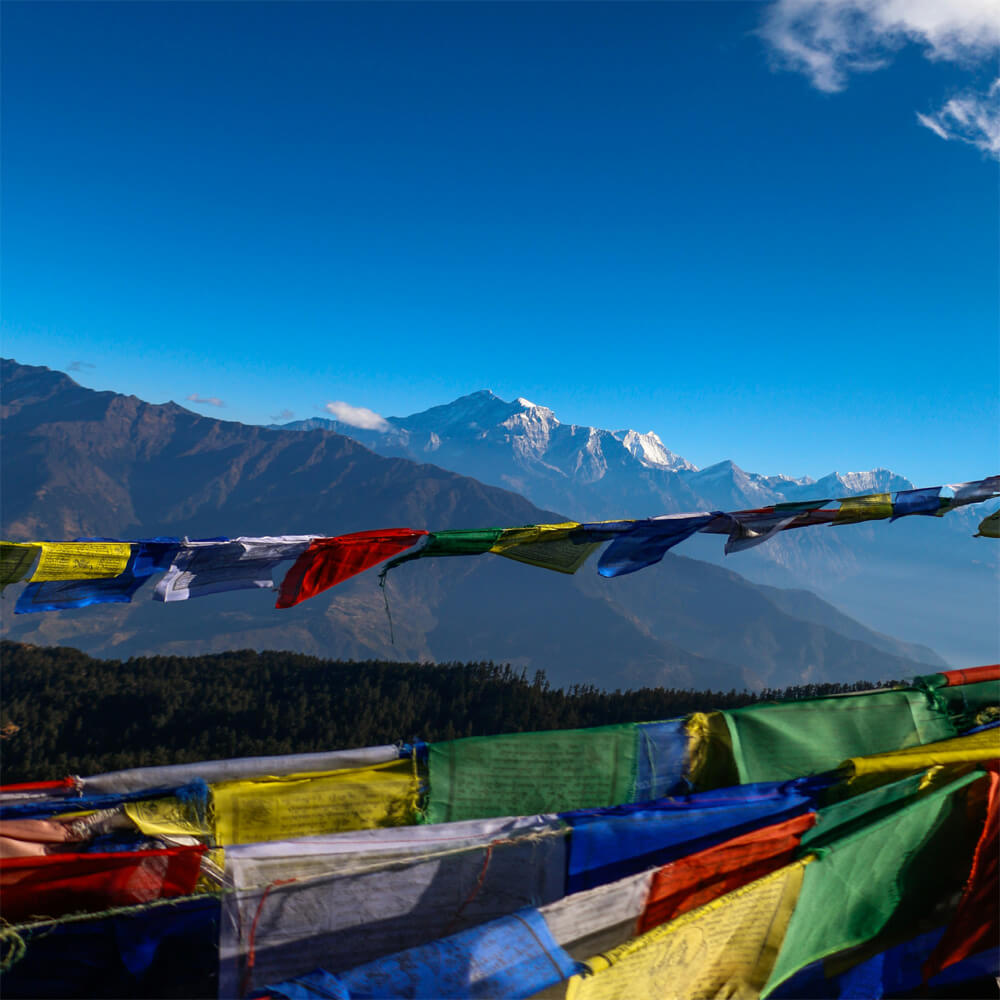
Even seasoned trekkers find the Everest Three Passes Trek Difficulty to be quite challenging. The typical Everest Base Camp trek is not like this one. The Three Passes Trek includes three high mountain passes, which greatly increases the physical and mental difficulties, whereas Everest Base Camp primarily consists of traveling vast distances on well-trod paths. One of the hardest treks in the Everest region, the Kongma La, Cho La, and Renjo La passes raise trekkers to elevations exceeding 5,000 meters.
The Everest Three Passes Trek Difficulty comes from many factors. First, trekkers have to walk difficult ascents and descents every day because to the substantial elevation gain. Second, particularly in early spring or late autumn, the routes may be slippery, snow-covered, or rough. Careful technique and strong endurance are necessary on these trails. Third, because the trek typically lasts 18 to 20 days, it requires a lot of walking (6 to 8 hours per day) with little downtime.
Another major factor contributing to the difficulty of the Everest Three Passes Trek is altitude. Trekkers must ascend over 5,500 meters to reach the upper passes, where the air is thin. Altitude sickness is a serious possibility at these elevations, and exhaustion sets in more quickly. Adequate acclimatization is crucial. To aid in the body's adjustment, many trekkers spend additional days in high-altitude communities like Namche Bazaar or Dingboche.
For this trek, physical fitness is crucial. Long walking distances, steep ascents, and carrying a daypack or other personal equipment are all things that trekkers should be able to manage. Equally vital is mental toughness. The trek passes into isolated locations where solitude can be difficult and weather can change abruptly. Trekkers can overcome challenging days with the aid of motivation, endurance, and an optimistic outlook.
Thus, the Everest Three Passes Trek is high but manageable for prepared trekkers. It could be very challenging for novices or people with little prior high-altitude trekking expertise. Seniors and lone trekkers should make thorough plans and think about hiring support staff or guides. Despite the difficulties, this Nepal trekking is incredibly fulfilling and provides amazing views of Ama Dablam, Everest, and other peaks in addition to the opportunity to learn about Sherpa culture and visit isolated Himalayan villages. Trekkers can safely finish this challenging trek if they are prepared, pace themselves appropriately, and show consideration for the mountains.
Everest Three Pass Trek Terrain and Trail Conditions
The topography and trail conditions have a significant impact on the Everest Three Passes trek difficulty. Trekkers encounter a variety of obstacles, including high mountain passes, ice areas, rocky trails, and steep climbs. Comprehending the landscape aids in preparing for obstacles that are both mental and physical. Here's a closer look at what to anticipate while trekking in Nepal.
Steep Ascents and Descents Everest High Pass Trek
Unlike the Gokyo Lake trek difficulty, the Everest Three Passes Trek difficulty is mostly due to the trail's continuous up-and-down sections. Trekkers ascend steep slopes on a daily basis, which can be taxing, particularly when they are carrying backpacks. Because descending strains the knees and muscles, it can be just as difficult. It is crucial to pace yourself, use trekking poles, and wear appropriate footwear. Training prior to the trek is required because the steep routes demand endurance and stamina.
Rocky and Uneven Trails
There are also rocky, uneven, and occasionally slippery paths while trekking in Nepal. Walking across small rocks or loose stones is more difficult and demands concentration. Even brief sections of rough ground might hinder progress and make the trek seem more difficult than usual. This feature makes the Everest Three Passes Trek more challenging overall, particularly for novices or those who are not accustomed to mountain trekking. Wearing strong boots and trekking with caution can help lower the chance of harm.
Crossing High Passes in Everest Region
Crossing the three high passes Kongma La, Cho La, and Renjo La is the most difficult portion of the journey. These passes are located at high elevations with thin air, frequently above 5,000 meters. The trail may become slick due to snow or ice, and the weather can change rapidly. Strong legs, constant balance, and cautious acclimatization are necessary for every pass. A major factor in classification of the trek as rigorous is the difficulty of these passes. One of the most challenging aspects of the Everest Three Passes Trek difficulty is successfully crossing them. It is also a physically and psychologically rewarding experience.
All things considered, the Everest Three Passes Trek is among the most difficult trek in Nepaldue to the terrain and path conditions. Trekkers should be physically fit, well-prepared, and equipped to handle high passes, rocky trails, and steep climbs.
Altitude Challenges: Everest Three Passes Trek Difficulty
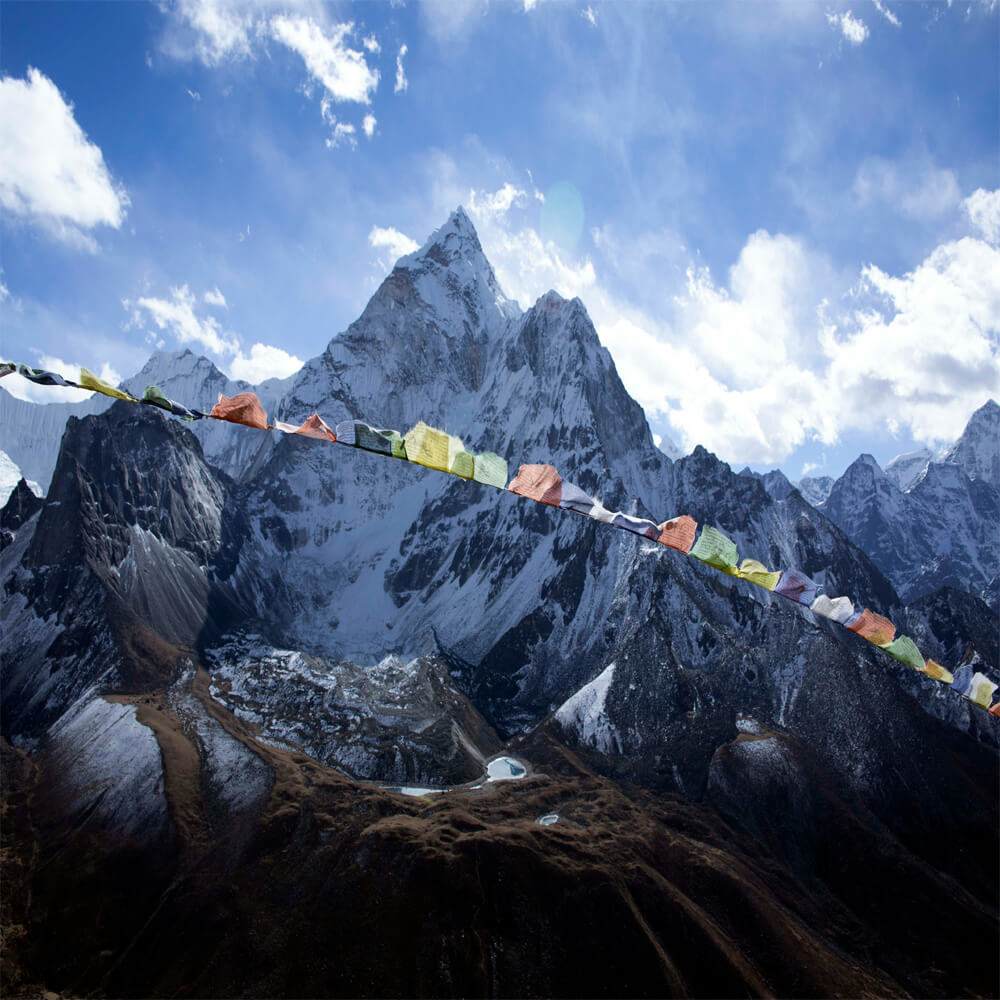
In addition to its breathtaking landscapes, the Everest Three Passes Trek is well-known for the extreme elevations that trekkers must endure. A safe and effective trekking in Nepal depends on knowing altitude. It is one of the key elements influencing the difficulty of the Everest Three Passes Trek.
High Points of the Trek
The three main high passes traversed by this Everest Region Trek are Renjo La, Cho La, and Kongma La. Kongma La, the highest point, is roughly 5,535 meters (18,159 ft) above sea level. Although trekkers begin at lower elevations, they must make consistent ascents and descents every day. Because the air is thinner and has less oxygen at higher elevations, walking takes more energy. This raises the Everest 3 Passes Trek difficulty by making even easy steps feel more tough than they would at lower heights.
Effects of Altitude on the Body
While trekking in Nepal, the body must adapt to decreasing oxygen levels as you ascend higher. Shortness of breath, headaches, exhaustion, and occasionally nausea are typical symptoms. These can increase the difficulty and weariness of trekking. Ignoring these symptoms puts trekkers at considerable danger for altitude sickness. To manage the Everest Three Passes Trek difficulty caused by altitude, it is essential to pace yourself appropriately, drink plenty of water, and take breaks.
Acclimatization and Safety Tips
The journey has rest days for acclimatization in order to manage the difficulties of high altitude. Ascending gradually enables the body to adjust safely. Always pay attention to your body, descend if you are feeling ill, and do not rush to the passes. Additionally helpful are using trekking poles, being warm, and consuming adequate foods high in energy. An acclimatization plan is essential to lower the Everest Three Passes Trek difficulty and ensure a fun and safe trip.
Finally, altitude plays a significant role in the difficulty of the Everest Three Passes Trek. Physical endurance, cautious acclimatization, and a focus on safety are required for the high passes. Well-prepared trekkers can successfully navigate the difficulties of high elevations while soaking in the stunning Himalayan scenery during the Nepal trekking.
Physical Fitness Requirements
Being physically fit is crucial because the Everest Three High Passes Trek is one of the hardest treks in Nepal. Trekkers must possess endurance, strength, and stamina in order to walk for extended periods of time each day, frequently on rocky and steep paths. With height gains of 400–700 meters, trekking days typically run 6–10 hours, particularly when traversing high passes like Kongma La, Cho La, or Renjo La. For example, the Cho La Pass Trek calls for cautious walking and strong leg muscles due to its ascent of high, ice- and rock-covered slopes.
The trek to Gokyo Lake can be less difficult than the Three Passes. Even seasoned trekkers may become exhausted due to the high altitude and uphill paths involved in the Gokyo Lake Trek. Trekkers should strengthen their cardiovascular fitness before beginning the trek because daily climbs and the thinner air at higher elevations can make breathing more difficult.
Unlike the Gokyo Lake Renjo La Pass Trek, planning three passes trek will expose you to difficult terrain and many days of walking. Trekkers must be ready for both endurance and balance because this route includes multiple high passes and stops at the stunning Gokyo Lakes. Even if your bag is light, carrying it yourself puts additional load on you. Trekking poles can increase stability on uneven trails and lessen knee strain.
It is crucial to train prior to the Nepal Trekking. Basic physical activities such as jogging, stair climbing, brisk walking, and backpack carrying might help your body get ready. Stair climbing will be easier if you strengthen your back, legs, and core. Your body can become accustomed to walking lengthy distances if you trek at lower elevations before the actual trip.
Maintaining strength also requires proper nutrition, hydration, and rest. To prevent fatigue, even physically fit trekkers must pace themselves on the high passes and take rests. The Gokyo Lake Cho La Pass Trek, and Gokyo Lake Renjo La Pass Trek are all doable with proper planning, exercise, and an optimistic outlook. You can safely enjoy the breathtaking mountain views, glistening lakes, and exhilarating adventure if you are physically prepared.
Weather and Seasonal Impact on Everest Three High Passes Trek
The weather has a significant impact on trekking in Nepal, particularly on difficult routes like the Everest Three High Passes. Trekkers can better prepare, stay safe, and enjoy the adventure by being aware of the seasonal variations.
Best time for Everest Three high passes trek
In Nepal, spring (March to May) and autumn (September to November) are the best seasons for Everest Three high passes trek. There is less risk of severe rain or snowfall during these months, and the weather is typically clear and mild. While autumn brings clear sky and breathtaking mountain vistas, spring trekking in Nepal delivers rhododendron blossoms and vibrant sceneries. You can comfortably cross high passes in both seasons.
Summer and Monsoon Challenges
The monsoon rains make Nepal trekking more challenging from June to August. Trails can get muddy, slick, and occasionally hazardous. In the Everest region, landslides are also frequent during periods of intense precipitation. Summer is a difficult season for trekking in Nepal because of the high passes, such as Kongma La, Cho La, and Renjo La, which can be particularly dangerous.
Winter Conditions
Winter, which lasts from December to February, is characterized by bitter weather, snow, and high winds. Low visibility and snowy trails make crossing high passes much more difficult. In Nepal, trekkers need to be well-prepared with warm clothes, the right equipment, and an understanding of winter trekking. Winter trekking can be beneficial for seasoned trekkers who appreciate isolation and snow-covered mountains, even if fewer people attempt it during this season.
How Weather Affects Daily Trekking
The Himalayan weather is subject to sudden changes, even during the best seasons. Even if the sky may be clear in the morning, clouds and snow may appear in the afternoon. Daily plans must be flexible when trekking in Nepal. For safety, trekkers should arrive early, pack for rain and cold weather, and be prepared to modify plans as needed.
Tips for Safe Everest Three High Pass Trek
- Before you start your day, check the weather forecast.
- To cope with fluctuating temperatures, wear layers.
- Keep necessities with you, such as waterproof boots, gloves, and a warm jacket.
- At high passes, be ready to rest or wait for safer conditions.
- Always follow the guidance of tour guides who are familiar with the local climate.
Mental and Emotional Challenge
In addition to being physically demanding, the Everest Three High Passes Trek is mentally and emotionally difficult. Trekkers deal with long days, harsh weather, and isolated locations with little access to assistance. Just as crucial as getting your body ready is getting your mind ready. You may manage the travel more safely and joyfully if you are aware of mental challenges.
Coping with Long Trekking Days
It can be exhausting to walk for six to nine hours every day, frequently on uneven and hilly paths. Because it involves several high passes, even trekkers who have completed a Everest View Trek could find this one more difficult. It is crucial to take regular rests, maintain a steady pace, and concentrate on little objectives like getting to the next town or teahouse in order to cope. Maintaining a positive outlook and acknowledging minor accomplishments keeps motivation levels high.
Facing High Altitude Stress
The journey passes across 5,000-meter-high passes such as Kongma La, Cho La, and Renjo La. Many trekkers experience exhaustion, headaches, or shortness of breath. While the Everest Base Camp Trek difficulty focuses primarily on walking steadily uphill, the three high passes also include abrupt, sharp climbs and descents, which can be emotionally taxing. Understanding the signs of altitude sickness and engaging in calm, deliberate breathing techniques might help reduce stress and avoid panic.
Dealing with Isolation and Remote Trails
There are isolated areas of the journey with few trekkers and little communication. For beginners or lone trekkers, this isolation can be stressful. Unlike a regular Everest View Trek, where communities are more common, the Three High Passes route may need days without seeing many people. Bringing entertainment, journaling, or exchanging thoughts with a guide or trekking partner helps sustain mental well-being.
Staying Motivated Through Weather Challenges
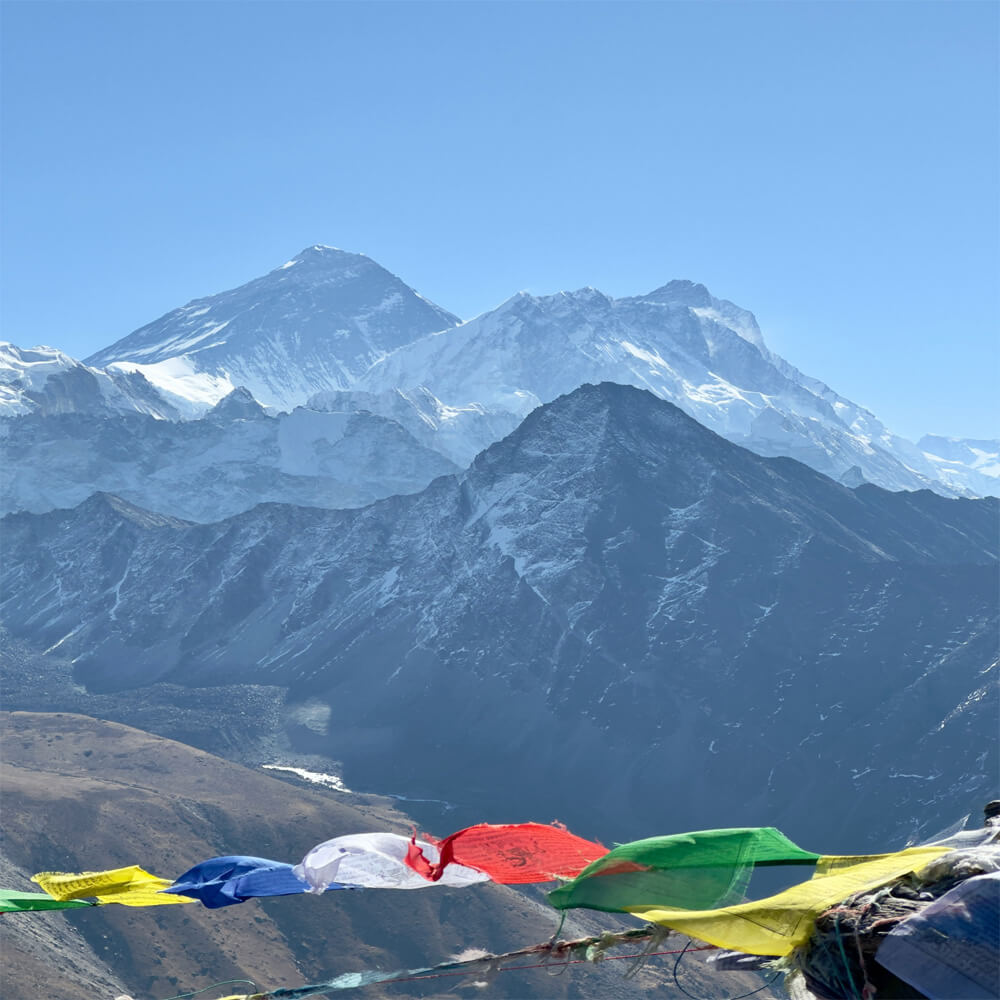
Rain, wind, and snow may make routes slick and exhausting, as well as hinder pace. Weather-related delays put endurance and patience to the test. Trekkers should concentrate on taking in the stunning Himalayan environment and acknowledge that weather can change suddenly. Morale-boosting activities include visualizing reaching the high passes or celebrating accomplishments at Everest Base Camp.
Mental Preparation Tips
- Establish reasonable expectations and goals for each day.
- Be mindful and think positively.
- Talk about your worries or fears with your guides or other trekkers.
- Before beginning, be ready for both mental and physical exhaustion.
Trekkers can more effectively handle the Everest Three Passes Trek difficulty by being aware and ready for these mental and emotional obstacles. Reaching the passes is only one of the rewards; others include increased self-assurance, endurance, and a closer bond with the mountains.
Safety and Preparation Tips
Everest Three High Passes Trek Cost and Why It Matters
Compared to many other trekking routes in Nepal, the Everest Three High Passes Trek cost can be more expensive. This is due to the fact that the trek is more difficult and lengthy. Typically, the price covers permits, porters, guides, lodging, and meals in the highlands. Tickets for flights from Kathmandu to Lukla also increase the spending limit. Although some tourists attempt to cut costs by tackling it alone, it is advisable to hire a guide for this trek because the passes can be hazardous in bad weather. You can pay for the trek and any crises if you carefully plan your budget.
Preparation for Trekking in Nepal
Your top goal should be safety when trekking in Nepal. Due to the Everest Three High Passes Trek's elevation of nearly 5,000 meters, physical preparation is crucial. Before your vacation, you should get comfortable going on lengthy treks with a backpack. Bringing the appropriate equipment, like a sleeping bag, sturdy boots, and warm clothing, will have a significant impact. Use water purification tablets and always have enough water and snacks on hand.
The Importance of Guides and Support Teams
Having a knowledgeable guide is beneficial for both safety and navigation. Guides are knowledgeable about route conditions, weather patterns, and how to deal with altitude sickness and other situations. Porters are capable of carrying hefty goods, so you can concentrate on taking in the scenery and walking safely.
Emergency Procedures and Insurance
Strong winds or snow can occasionally force the closure of high passes. Rarely, you could have to take a helicopter evacuation or turn around. For this reason, it is crucial to have travel insurance that covers trekking beyond 5,000 meters. Keep a copy of your emergency contacts on hand at all times, and share your daily plans with someone.
Final Safety Reminder
One of the most rewarding treks in Nepal is the Everest Three High Passes Trek, but it is also one of the most difficult. You may travel with greater assurance and peace of mind if you plan ahead, budget for the entire Everest Three High Passes Trek Cost, and prioritize safety. A difficult trek can become a memorable and secure experience with the correct planning.
Some of Frequently Asked Question
How hard is the Everest Three High Passes Trek?
It is considered very challenging. The trek involves steep climbs, rocky paths, and crossing three high mountain passes above 5,000 meters. Good fitness and preparation are important.
Can beginners do this trek?
Beginners can try it if they have trained well, have strong stamina, and travel with an experienced guide. It is better to have some trekking experience at high altitude first.
What is the biggest challenge on this trek?
The high altitude is the main challenge, as it can cause altitude sickness. The long walking days and unpredictable weather also make it tough.
Which season is best for an easier experience?
Spring (March–May) and autumn (September–November) are best because the weather is clearer and trails are safer compared to winter or monsoon.
Do I need a guide for this trek?
Yes, it is highly recommended. A guide helps with navigation, safety, acclimatization, and carrying essentials. For such a remote and difficult trek, professional support makes a big difference.
Conclusion: Everest Three Passes Trek Difficulty
The Everest Three High Passes Trek is one of the hardest treks in Nepal. Trekkers who are extremely fit, have some expertise at high elevations, and are prepared for long, exhausting days are the best candidates. Only those who are well-trained and with a good guide can attempt it. Elderly people should take more time to relax and pay attention to their bodies. Due to the high passes, unpredictable weather, and isolated locations, solo trekking is dangerous in this area.
Our company, Nepal Trekking Routes can improve the safety and enjoyment of the trek. To allow you to concentrate on trekking and taking in the scenery, we set up knowledgeable guides, porters, and all required permissions. Beautiful mountains, serene valleys, and a strong sense of accomplishment await you on this trek. All you need is to prepare, work as a team, and pace yourself properly. This trek could be the trip of a lifetime if you are up for a true adventure.





